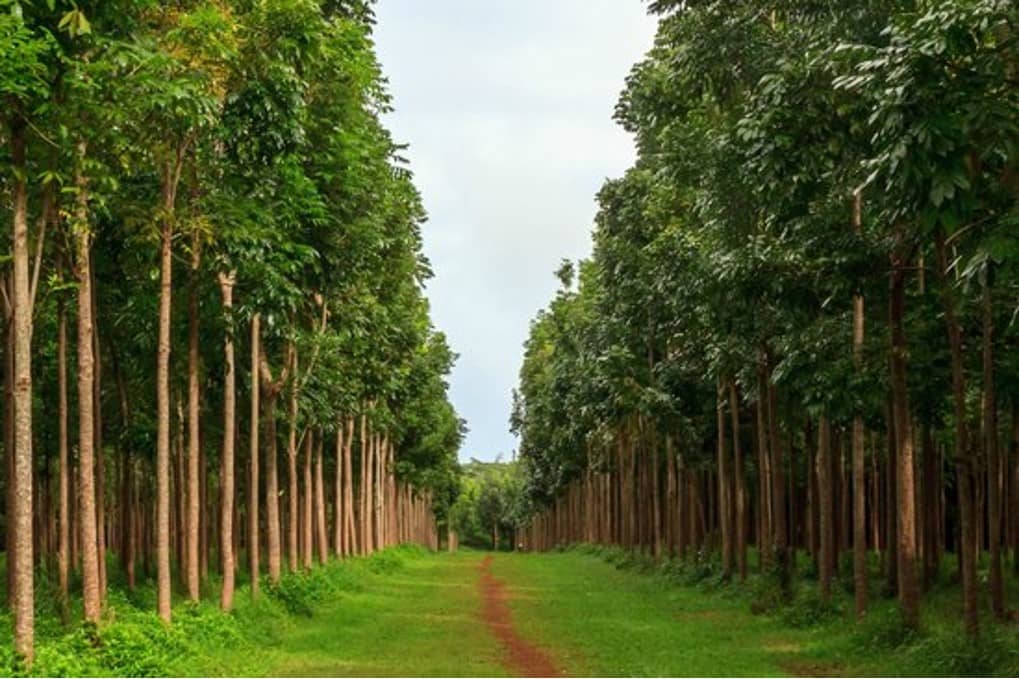Mahogany Tree
Introduction:
Mahogany is a deciduous plant, native of South Florida in United States and Caribbean islands. It is commonly known as American Mahogany, Cuban Mahogany, small leaved Mahogany and West indies Mahogany. It belongs to China Berry family found in Mexico and Central South America. Grows in wet and dry tropical forests from the sea level to the altitude of 4.600 ft. It regularly takes 12 years to reach a mature height of 50 ft. which means, they have relatively fast growth rate compared to other trees. It will grow up to 150 ft . height also with an average of 12 ft. diameter. Seeds will grow in a woody capsule called sky fruit, 6 inches long, same as wood colour, woody not softy or fleshy.

Varieties:
There are 3 predominant varieties exists
- 1) Swietenia Mahogany,
- 2) Swietenia Humilis,
- 3) Swietenia Macrophylla.
Out of the above three varieties, Swietenia Mahogany is the most popular variety. The plant is known for it’s beautiful reddish colour wood, straight grains which makes for beautiful carvings. Commercially important lumber prized for its beauty, durability and colour. Used for paneling and to make furnitures, boards, musical instruments etc.
Following are important points for cultivation of Mahogany:
- 1) South African trees with high commercial value.
- 2) Climate conditions in India are quite suitable.
- 3) It can be grown in any soil conditions.
- 4) Trees grows from 60-80 ft. in India over 10-12 years time @ 3 to 4 ft. per year.
- 5) The only option to the farmers to grow rich.
- 6) It has got very fast growth rate compared to other trees.
- 7) Planted under ideal conditions, in the right climate to help ensure, productive healthy growth.
- 8) Trees do best when planted in areas that receive partial to full sun, does not grow well in shade.
- 9) Can grow in a range of soil types but they do thrive best in well-drained sandy loam soils.
- 10) Plenty of space to be given to the tree as it grows large heights and spreads.
- 11) Avoid heavily shaded areas as trees are considered tropical varieties and thrive best in warm climates.
- 12) Harsh winters can easily damage trees winters below 40oF or 4.4o celsieus.
- 13) Avoid heavy clay soils and duplex soils. Do best in neutral soils, survive well in strongly acidic soils, but not in alkaline soils. If you need to use naturally alkaline soil, amend it with Sphagnum peat, Ammonium nitrate fertilizer, Sulfur coated urea or Agricultural Sulfur.
- 14) Since trees are deep rooted, make sure that the soil you plant is in runs deep too.
- 15) Space – Plant the trees atleast 15 feet (4.7 meters) away from any house or large structures.
- 16) Dig a pit 20” (50.8 cm) deep.
- 17) Mix organic material, compost, top soil to the pit, plant the seedling, spacing 9 to 10 ft. both rows and columns.
- 18) Recommended for buffer strip planting around parking lots or for medium strip planting in Highways, reclamation plant screen, shade tree, residential street tree. It can be grown successfully in urban areas where air pollution, poor drainage, compacted soil and other conditions.
- 19) Seeds contains a variety of metabolites, flavonoids, saponins and steroids, terpenoids, and can change the order of the DNA chain in the cell nucleus.
Revenues to the Farmers:
The plantation has got high medicinal values as follows:
- 1) Blood circulation improvement.
- 2) Controlling blood sugar (seeds).
- 3) Insect deterrent (Powder)
- 4) Treating constipation (Crushed seeds)
- 5) Reduce Alzheimers disease (Seed powder)
- 6) For Menstruation to ladies. (Seed powder)
- 7) For sexual disorders (Sky fruits)
- 8) Lack of appetite prevention (Sky fruits)
- 9) Combating free radicles with antioxidents.
- 10) Lowering the fat build up in the blood stream.
- 11) Lowers cholesterol and boost immune system.
- 12)Improves health by taking seed supplements.

 Chat with us
Chat with us
